Onzow, DS Audio Dynavox, Winyl, and LAST Stylus Cleaning compared
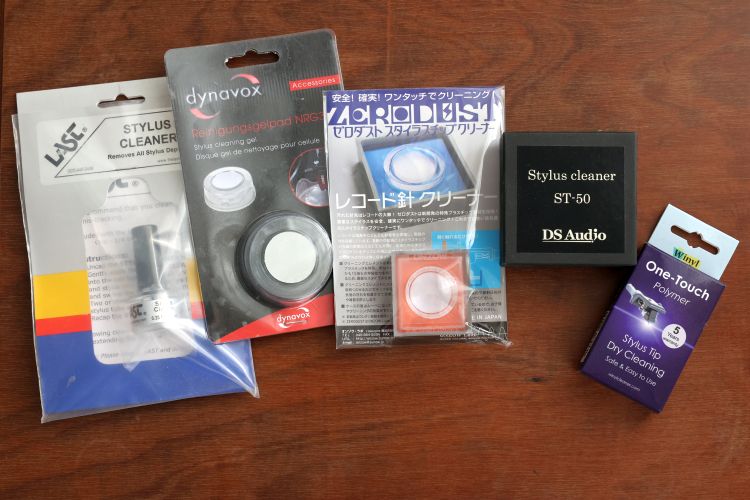
Retail prices when purchased in September 2021:
Dynavox NRG30 Stylus Cleaning Gel – €11,30 (now €9)
Winyl One-Touch Polymer Stylus Tip Dry Cleaning System – €25 (still €25)
Onzow ZeroDust – €78.80 (now €55)
DS Audio ST-50 Stylus Cleaner – €80 (now €69)
LAST Stylus Cleaner – €29 (still €29)
Foreword
I purchased all these cleaners by the end of 2021, in order to get an unbiased view of how they perform and how they compare. Due to time constraints, and in part due to the time-consuming complexity of this test, it took until now to finally perform the tests. When I finally wrote this article, I found that the two most expensive products had been lowered in price. What’s more, even the affordable variants had either stayed the same in price or were reduced even though we are currently experiencing high inflation rates. So, is now the best time to step on board? Read on to find out!
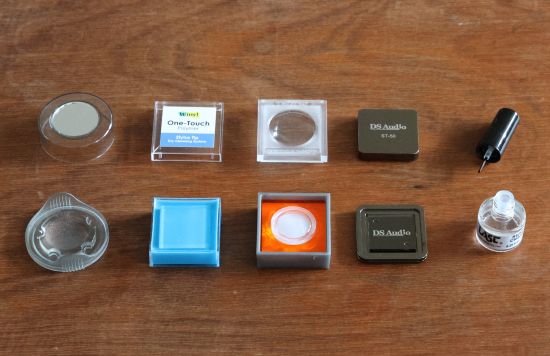
Testing Method
Prior to testing each cleaning method, I made sure to get my stylus dirty by playing unwashed dirty records and using the same test track each time. In-between tests, I thoroughly cleaned the stylus with record cleaning fluid (part alcohol) and Tonar Quality Service Vinyl Cleaner (which I use with the ClearAudio Matrix record cleaner) and a hard brush. After that, I allowed the stylus to get dirty again.
The comparisons were done in cooperation with my neighbors Bart & Jessyca who are not die-hard audiophiles but are highly perceptive and deeply interested. The beauty of these people is that they are not biased by any pre-existing audiophile beliefs, yet they never seem to fail at pointing out the exact same aspects of sound that I hear without my telling them what to look out for, and the same was true in this test. I like to think that this will add extra gravitas to the results that I am about to unveil, especially for those who might be skeptical that there could be meaningful differences among these products.
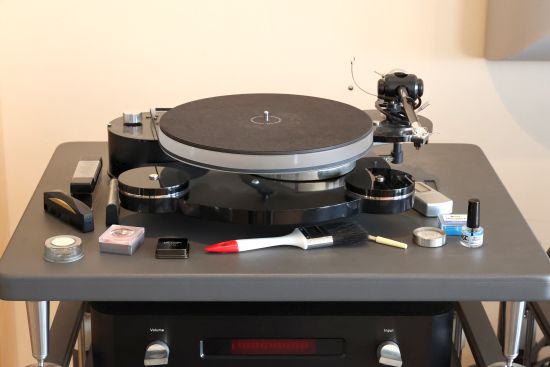
For this test, I used the Origin Live Calypso mk4 turntable with Multi-Layer Platter, Illustrious arm, and Silver Hybrid cable, with an Aidas Rainbow MC cartridge. The phono stage was the CH Precision P1. See the Main System page for more audio component info.
Purpose
A dirty stylus will lead to several adverse sonic effects such as scratchy treble, muddy mids, and less articulate and immediate expression, as well as posing a threat for damaging records. It speaks for itself that a stylus should be cleaned frequently, preferably before every record.
The purpose of Dry Cleaning methods is to introduce a safer method for stylus cleaning. It avoids using solvents that can affect the stylus cement or glue with which the stylus is attached to the cantilever. In general, it is recommended to be careful with any fluid that contains alcohol. Some manufacturers that use cement to bond styli to cantilevers, such as Ortofon, specifically recommend against using solvent-based liquids that can dissolve the bonding material. While the glue of most stylii will not be adversely affected, one still needs to take care not to let the fluid creep up and land on the cantilever’s suspension for if it does end up there, capillary action will quickly spread it. Apart from this, using a dry method and lowering/raising the tonearm with the lift will also greatly reduce the risk of manually breaking the stylus or cantilever by using too much force with a brush or accidentally nudging it the wrong way. The idea is to simply use the force of “stickiness” to get rid of accumulated dust and dirt on the stylus. The first four methods all work according to this method.
The LAST stylus cleaner deviates from these four methods by being a wet cleaner. Thus, it requires a steady hand but its special formulation is said to be completely safe for all cartridge assemblies.
See also the Longevity section in the Phono Cartridge Stylus Shapes article for more info on cartridge maintenance.
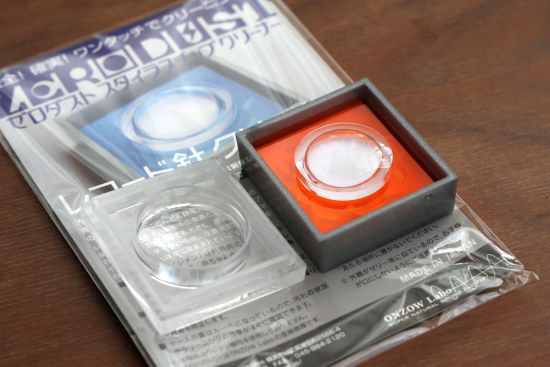
Onzow ZeroDust
Onzow ZeroDust is perhaps the most famous dry stylus cleaning method and at its orinigal price of 78 euros, it is also one of the most expensive options. The case is well-made and the lid comes off very easily without needing to hold down the bottom part. The shape is made such that you won’t inadvertently put on the lid incorrectly, and you’re not likely to land the lid in the gel.
It makes use of non-disclosed ultra-soft plastic material, only indicated to be “not urethane gel”. The gel sits in the case as a bloc-like bubble which made us refer to it simply as “the blob-variant”. The blob material is quite soft, and it lets the cartridge sink so deep that not only the stylus but the entire cantilever is submerged. When lifting the arm, the needle comes loose easily and you can see immediate evidence of dust left behind in the material.
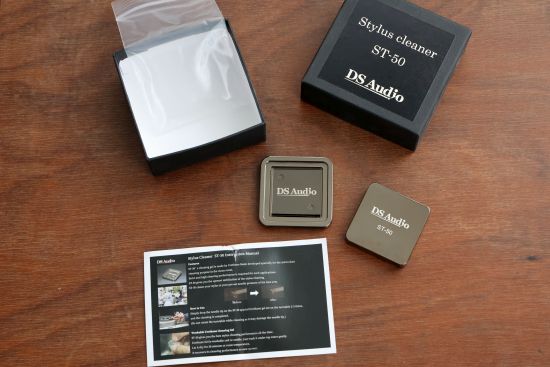
DS Audio ST-50
With its beautiful shiny metal casing, the Japanese DS Audio ST-50 is the most luxurious method of cleaning a stylus and at its original price of 80 euros, it is even more costly than the ZeroDust. But I wanted one, based on looks alone! In use, it handles well, and its weight makes it easy to lift the lid without needing to hold down the bottom part, although the thinness of the lid could make it potentially slip from your fingers a little more easily. Also, its low ridges could inadvertently allow you to put it back rotated, making it stick to the pad. But these are minor concerns that for me don’t outweigh the utter luxury of the item. It uses a flat strip made of urethane, specially developed for micro-dust cleaning in clean rooms (presumably as floor mats). This is why we soon lovingly dubbed the material “matje” which in Dutch means small mat.
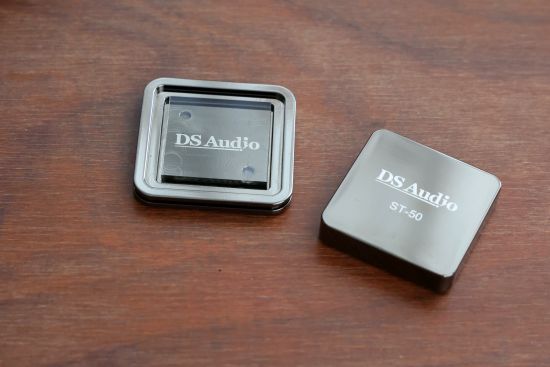
The gel is considerably harder than the Onzow’s soft “non-urethane-gel”. As a result, it’s mostly just the needle tip that is submerged while most of the cantilever remains cleared. The material may be tough, but it is also quite sticky, pulling at the cantilever with more force than the Onzow ZeroDust. One slight concern that I have is that the stylus’ slight forward movement as it moves down is somewhat prohibited by the material’s toughness. But as with the ZeroDust, you can immediately see dust particles trapped in the material after lifting the tonearm.
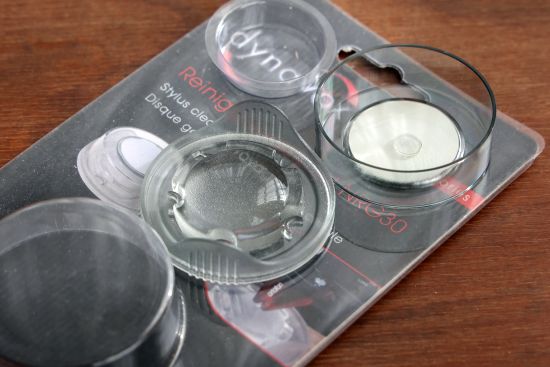
Dynavox NRG30
The China-made, Germany-distributed Dynavox NRG30 cleaning gel has a very different shape but similar structure and viscosity as the Onzow material.
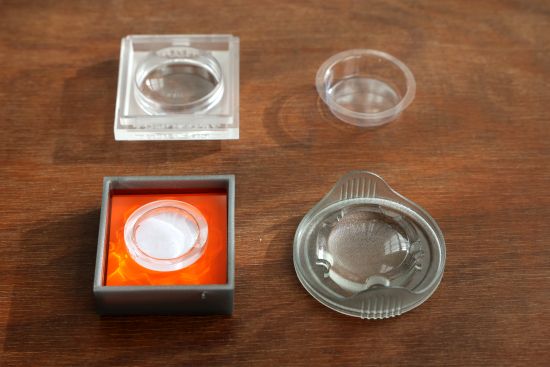
Left: Onzow ZeroDust; Right: Dynavox NRG30
I decided to also purchase it to see if it worked the same or if there are advantages to the Onzow. One thing that’s clear right away is that the cheaper solution weighs next to nothing and needs to be handled with two hands. Then again, its round shape makes it easy to recap. The gel material is not mentioned but it looks identical to the Onzow’s material (“not urethane”). In use, the material has the same cohesion and stickiness, and the needle sinks as deeply, and comes out as easily, as with the Onzow.
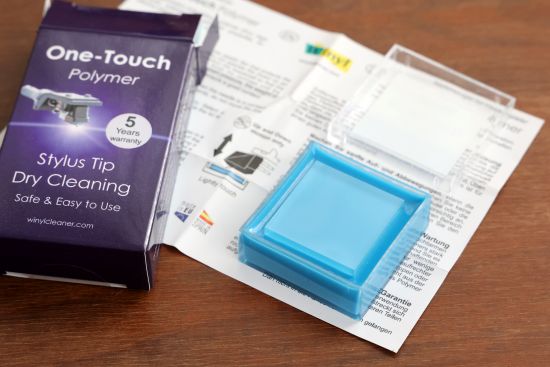
Winyl One-Touch Polymer
Just as the Dynavox NRG30’s material reminds of the Onzow’s, the Spain-made Winyl One-Touch Polymer’s pad seems to be very similar to the pad used in the DS Audio.
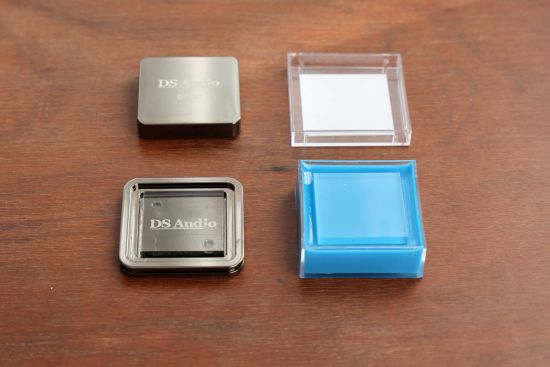
Left: DS Audio ST-50; Right: Winyl One-Touch Polymer
The two pads have the same size and overall appearance. Winyl mentions their pad’s material to be a PU Tech Polyurethane polymer.
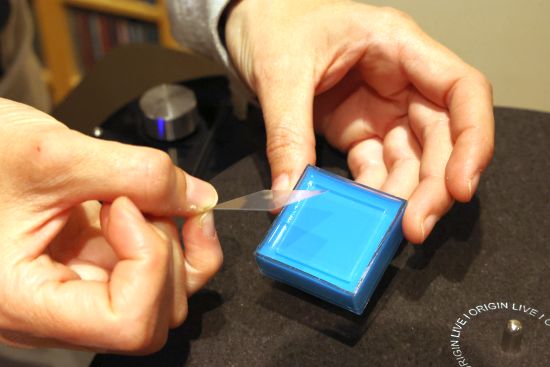
Interestingly, the Winyl had a thin protective plastic film on the material that I only noticed after trying to lower the needle into it and finding that it just sat on top. Of course, this was mentioned in the instructions leaflet that I had not read yet. In use, the material does indeed mimic the DS Audio in every way. The main downside of the Winyl is operational in nature and it is that the lid sits very tightly and you have to pull it off with so much force that you could risk dropping it.
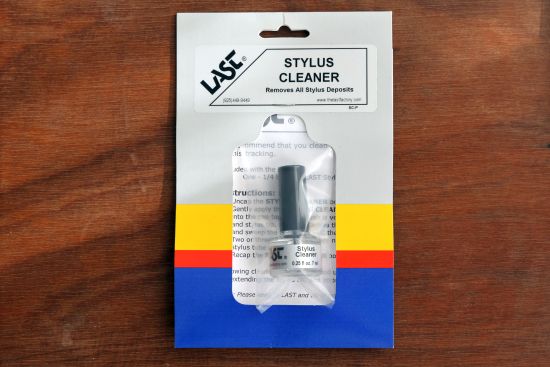
LAST stylus cleaner
LAST comes highly recommended by Ron Ploeger of Callas Audio, a good friend and someone who lives and breathes analog. Unlike the aforementioned four methods, LAST employs a wet cleaning method. It looks a lot like a bottle of clear nailpolish, right down to the cap-attached soft brush.
LAST uses only the purest chemicals and triple-filtered deionized water in their biodegradable formulations to insure that their products leave no residue or impurities on the records. It is said to contain no alcohol and be safe to use for all cartridges, even those that are notoriously sensitive to this.
Upon a sniff-test, I can confirm to smell no alcohol-like substances.
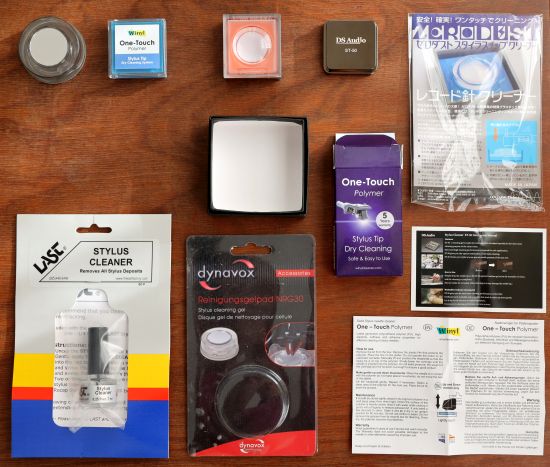
Next: The Test
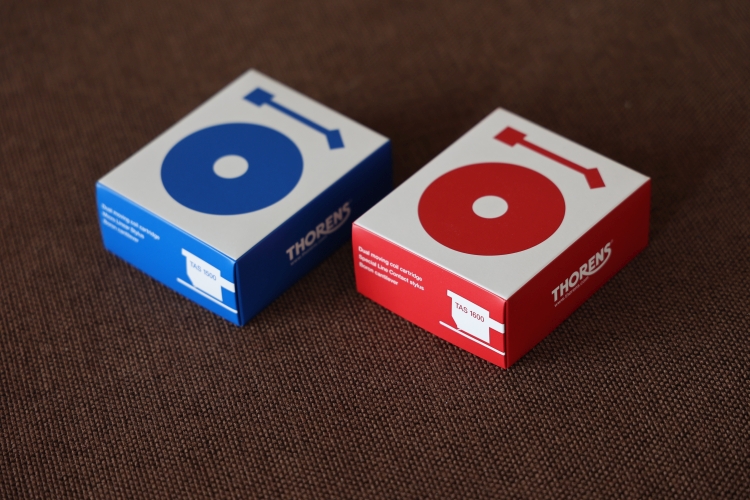
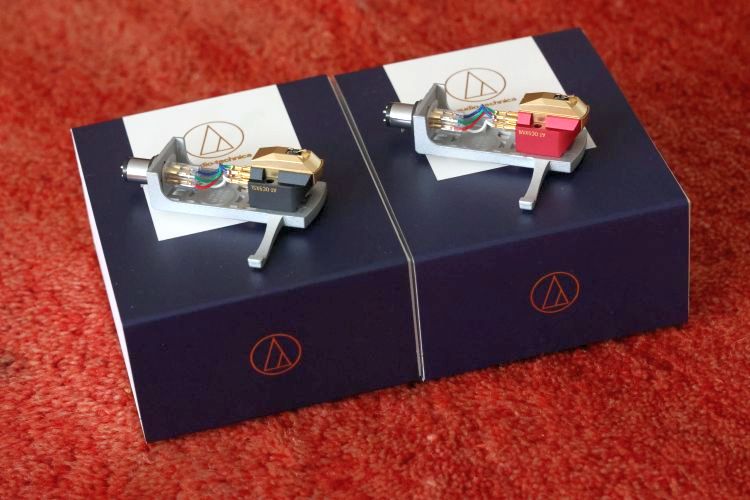
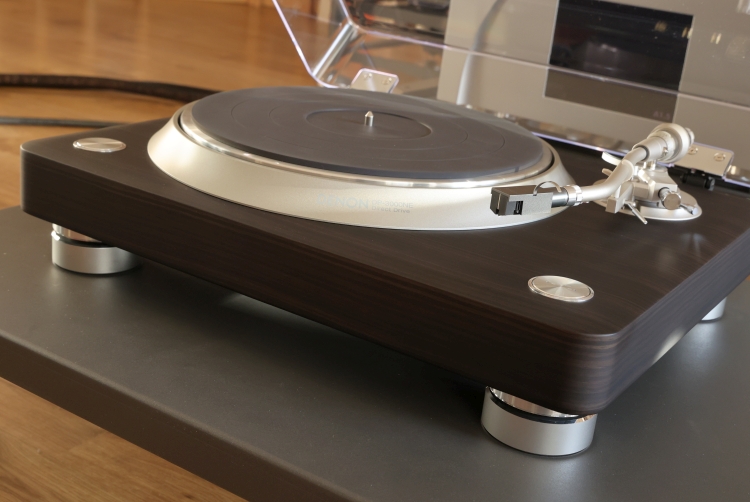
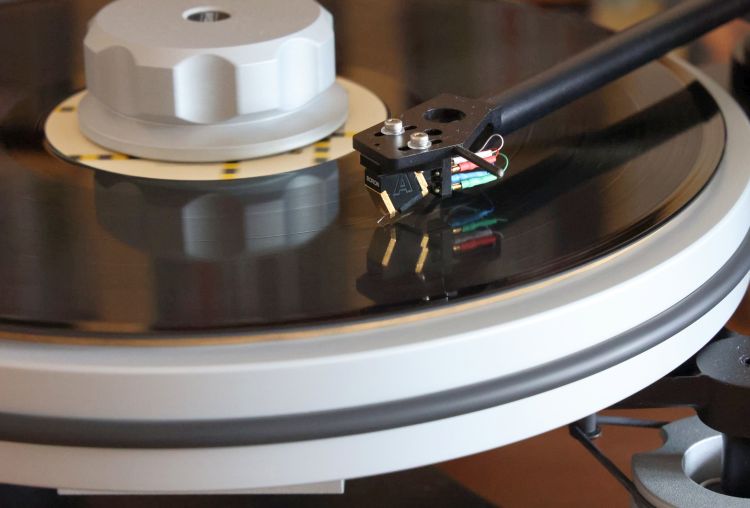
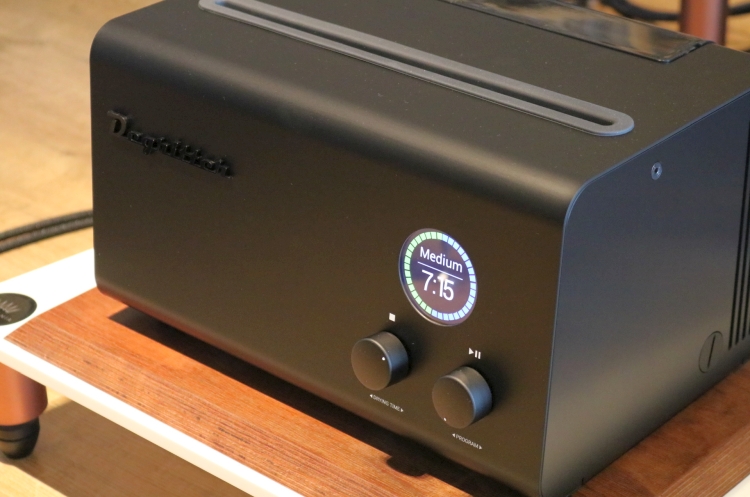
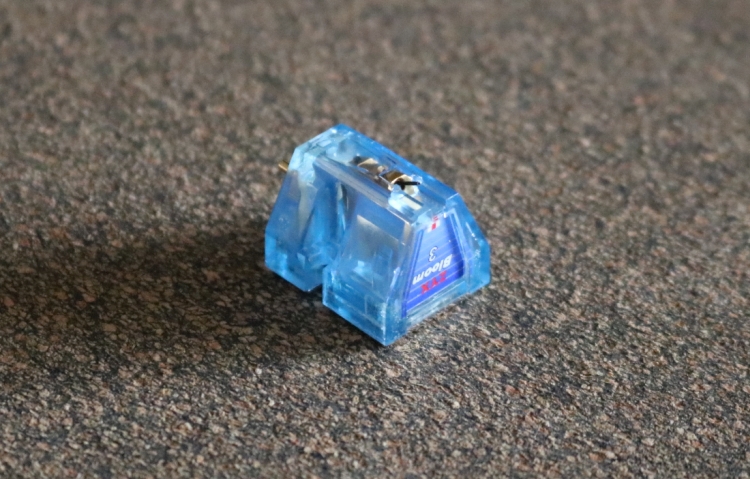
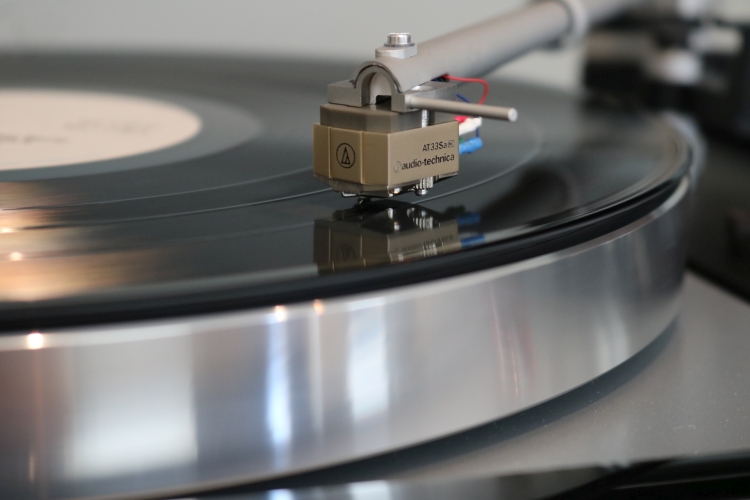
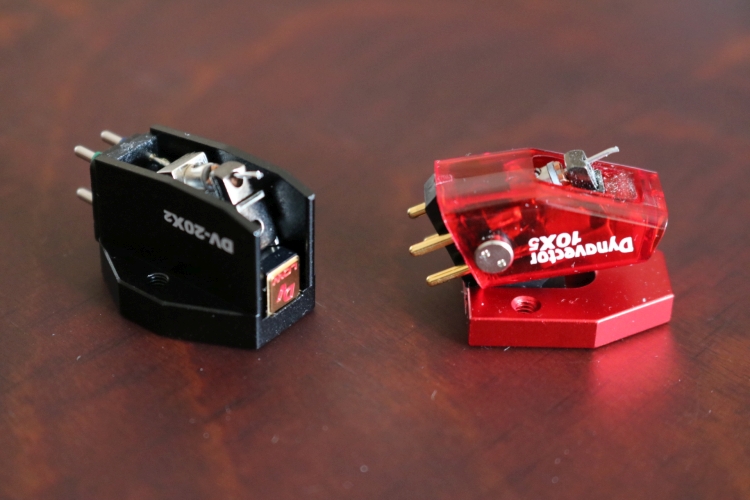
I have to say, you must have super ears to be able to detect these minute differences. I wonder if you’d reach the same results in blind tests. I use Stylast also made by the LAST company. Being a liquid, it essentially does the same as the stylus cleaner but it is said to preserve your stylus and lengthen its life. Who knows if it really works? However, I can see through a magnifying glass that it does clean the stylus well. I use it after every side.
Honestly, you don’t need super ears or even special audiophile training. We all heard the effects very clearly. This is why I also mentioned my neighbors as they are unbiased. I purchased all the items and have no reason to hear an effect one way or another. If anything, I had high expectations of the Onzow and DS Audio products. I merely note what I hear. Prior to going into this test, I was not aware/suspicious of the dry-cleaning methods leaving a residue (as I suspect they do) but in general, I am not a fan of any substances that add a layer of something. I have not tried Stylast.
Micheal Fremer did an article a while ago reporting on traces of gel adhering to the stylus following cleaning. It included some alarming pictures taken by the people behind the Wallytractor. I stopped using mine immediately after reading the article. It seems to provide some corroboration for your findings
Interesting test Christiaan!
Ofcourse it helps when your system has a certain level of resolution.
@ Alan, can you maybe more specific?
The article originally appeared on Analogue Planet about 6 months ago. I tried to find it for you, but with Fremer setting up the new site, the Tracking Angle, all such articles disappeared from Analogue Planet. It doesn’t appear to have been transferred to the new site.
As far as I remember, some styli, sent for re-tipping exhibited significant build ups of gunk which proved extremely difficult to remove. The Wallytractor company, which possesses a high quality microscope got involved and produced some very clear pictures showing the phenomenon which was attributed to the commonly available polymer type stylus cleaners. I’m being deliberately vague as I don’t want to make attributions about particular products when I don’t have the article in front of me from which to quote. Suffice to say, after reading the article I stopped using the polymer cleaner and went back to a good old stylus brush. I try to keep my vinyl clean with a combination of VPI vacuum system and an ultrasonic bath so hopefully limiting dirt build up on the stylus
I’m sure if you contact Michael Fremer at The Tracking Angle he will provide you with a copy of the article
Excellent review !
I’m a long term Last user – 40years+ – of Stylus cleaner, Stylast preservative, Stylast record cleaner.
Quality products that have withstood the test of time.
Hi Alan, many thanks for your explanation. Does Fremer’s findings also count for Stylast?
I’m late to the party, though I did comment on this months ago. But after rereading this article, I can’t help but comment on the slipshod method used to test these products. Of course, this was not a complex scientific study, but I can’t help but doubt that the conclusions reached are substantively very questionable.
I still submit that one would have to have super ears to reach similar conclusions. I have no horse in this race. I’ve used the DS Audio product, Blue tac, Last stylus cleaner, Stylast, Clearaudio stylus cleaner and Magic Eraser. All proved to be excellent at cleaning the stylus, though some seemed to be slightly better than others. But to claim to hear a distinct difference in sound after using a particular product strains credibility. Many so called “audiophiles” have a great deal more confidence in their discriminating abilities than is actually justified. I wonder what the results would have been if none of you knew which product was being used. I wonder if you would have reached the same conclusions separately if none of you knew what the other picked. Have you read the “blind” tests on Fremer’s old site where he compared several cartridges from inexpensive to extremely costly? The results were all over the place and proved absolutely nothing. Have you read the very excellent tests done with professional violinists who didn’t know what violin they were playing and couldn’t even recognize the sound of their own violin when they played it?
I am not claiming you had any horse in the game or anything to gain in this test. I just think you vastly overestimate your ability and that of your friends to hear minute differences in sound after cleaning a stylus with a particular product. You say the differences were clear. Sorry but in a blind test,I can almost guarantee that you would all come to different conclusions.